Toyota Corolla (E210) 2019-2025 Owners Manual / Maintenance and care / Air conditioning filter
Toyota Corolla (E210): Air conditioning filter
The air conditioning filter must be changed regularly to maintain air conditioning efficiency.
Removing the air conditioning filter
1. Turn the engine switch off.
2. Open the glove box. Slide off the damper (if equipped).
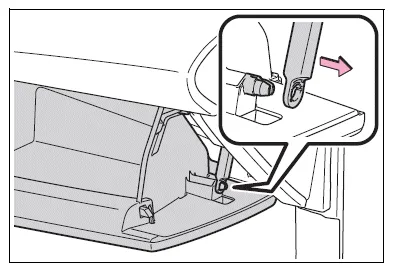
3. Push in the glove box on the vehicle's outer side to disconnect the claws. Then pull out the glove box and disconnect the lower claws.
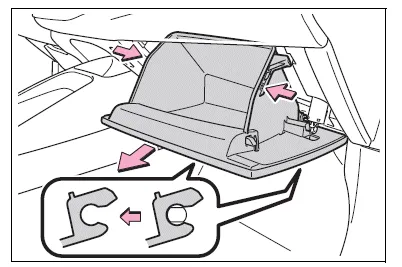
4. Unlock the filter cover (A), pull the filter cover out of the claws (B), and remove the filter cover.
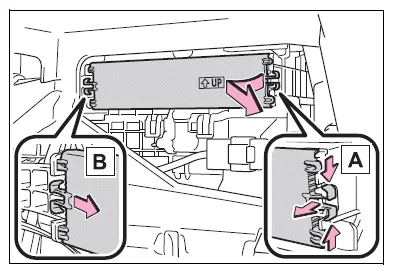
5. Remove the filter case.
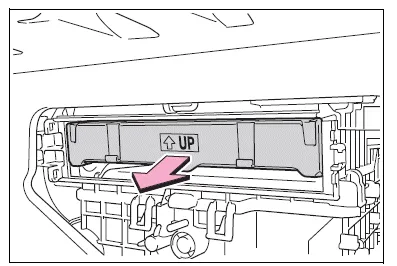
6. Remove the air conditioning filter from the filter case and replace it with a new one.
The " UP" marks shown on the
filter and the filter case should be
pointing up.
UP" marks shown on the
filter and the filter case should be
pointing up.
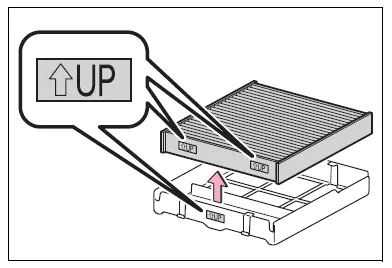
■Checking interval
Replace the air conditioning filter according to the maintenance schedule. In dusty areas or areas with heavy traffic flow, early replacement may be required. (For scheduled maintenance information, please refer to the "Scheduled Maintenance Guide" or "Owner's Manual Supplement".)
■If air flow from the vents decreases dramatically
The filter may be clogged. Check the filter and replace if necessary.
NOTICE
■When using the air conditioning system
Make sure that a filter is always installed.
Using the air conditioning system without a filter may cause damage to the system.
■To prevent damage to the filter cover
When moving the filter cover in the direction of arrow to release the fitting, pay attention not to apply excessive force to the claws. Otherwise, the claws may be damaged.
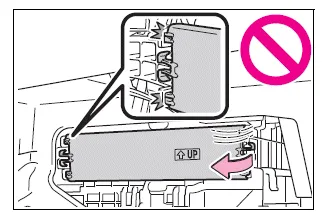
Other materials:
Replacement
Hint: components:
1. Remove floor shift shift lever knob sub–assy
2. Remove console panel upper
3. Remove parking brake hole cover sub–assy
4. Remove console box sub–assy rear
5. Separate floor shift cable transmission control shift
Separate the end of the shift cable from the ...
Cassette tape cannot be inserted or played
Wiring diagram
Inspection procedure
1 Check for any foreign object
Check for any foreign object.
Check that no foreign object or defect is detected in the cassette
tape player of radio receiver
assembly.
Standard: no foreign object and defect detected.
2 Check cassett ...
Circuit description
The p squib circuit consists of the airbag sensor assy center and instrument
panel passenger airbag assy.
It causes the srs to deploy when the srs deployment conditions are satisfied.
Dtc b0105/53 is recorded when a short is detected in the p squib circuit.
Wiring diagram
...


